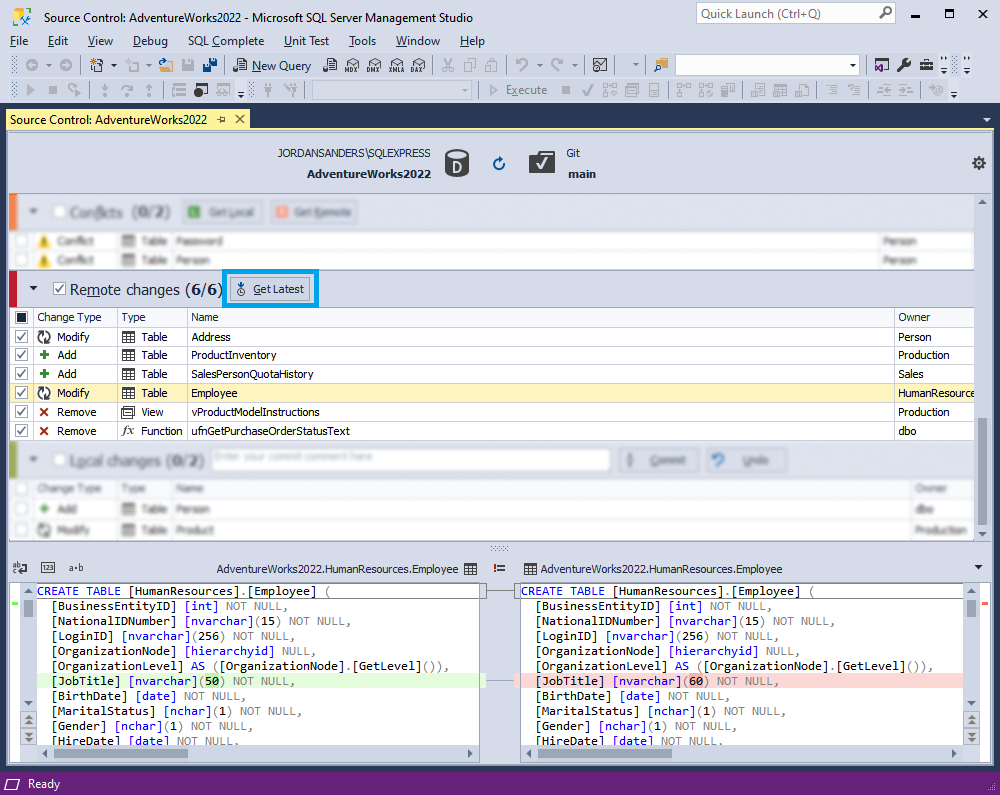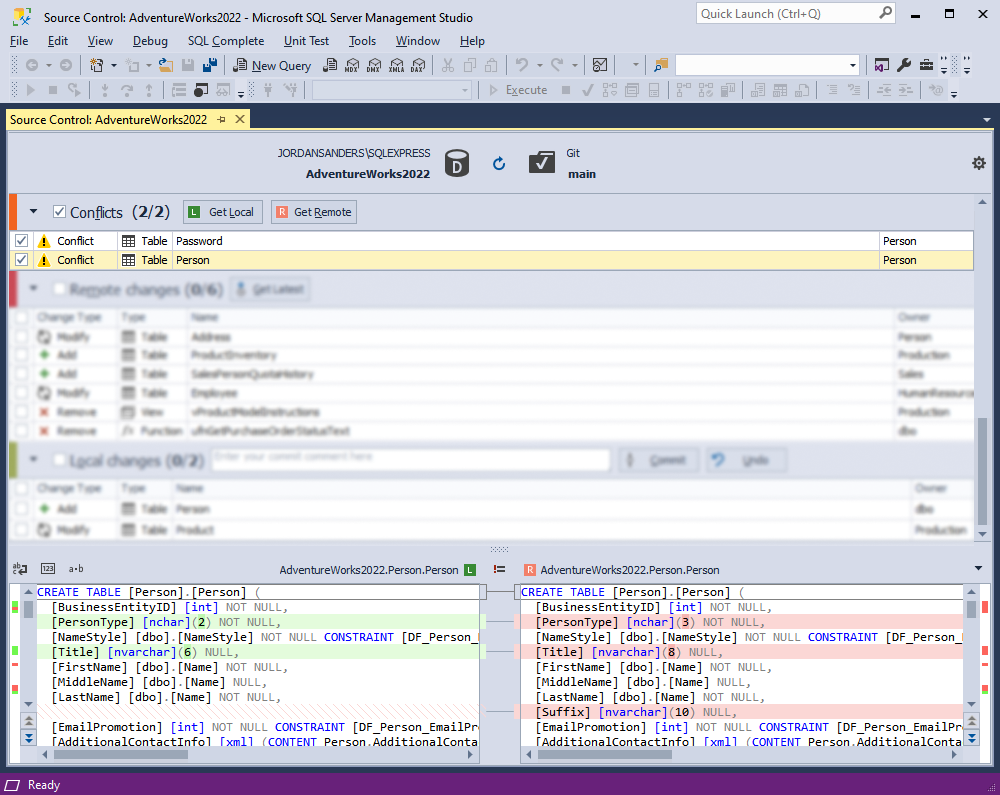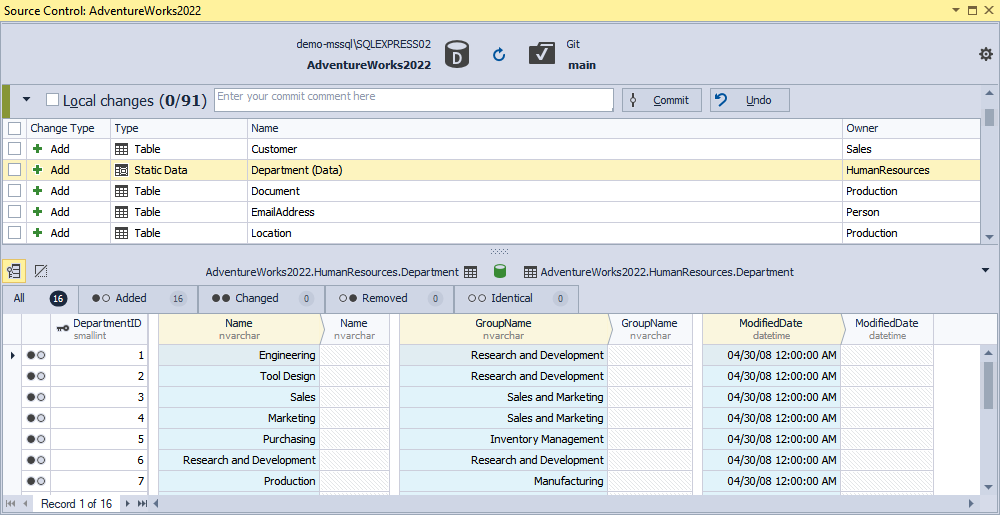Introduction to dbForge Source Control
Database version control is an essential practice that keeps track of every change made in your databases. In case a mistake is made, it is easy to go back to the earlier versions and compare them to help fix that mistake. In a collaborative environment, it helps all team members stay on the same page and ensures efficient and transparent simultaneous work on the latest version of any required database.
When it comes to developing and managing SQL Server databases, the typical IDE of choice is Microsoft SQL Server Management Studio. It is free, user-friendly, and rather rich feature-wise. However, it does not offer any capabilities for version-controlling objects and data. This is where dbForge Source Control comes into play.
What is dbForge Source Control?
dbForge Source Control is an add-in for SQL Server Management Studio that enables version control of database schemas and static table data by linking databases to the following version control systems: TFS, Apache Subversion (SVN), TFVC, Git (including Azure DevOps, GitHub, GitLab, and Bitbucket), Mercurial (Hg), Perforce (P4), and SourceGear Vault.
To learn more about the product, feel free to watch this video.
How dbForge Source Control works
dbForge Source Control makes it possible to set up the standard version control process directly from SQL Server Management Studio.
It enables you to perform all the essential version control operations.
Make changes in a database and commit them to version control
After you link a database or static data to a remote repository or a working folder, you can introduce changes to database objects. After that, the tool compares your current database copy with the version in source control and detects the differences.

If you want to commit your changes, you select the ones in the Local Changes section, write a comment in the corresponding text box, and commit your changes to the remote repository. In this case, source control repository will be updated with your changes. If you want to discard the changes that have been made in the database linked to the source control repository but have not been committed yet, you can use the Undo operation.
Get remote changes from version control and deploy them to the database
What if your teammate works on the same database using another local copy of it and makes their own changes? You will need to update your local copy of the database with these changes to be on the same page with your teammate.
After a refresh, you will be able to view these changes in the bottom pane of Source Control Manager. To update your local copy of the database with these changes, you should select them in the Remote Changes section and click Get Latest.

Resolve conflicts
Still, conflicts tend to happen when several people simultaneously make different changes to the same database objects or data. Conflicts are displayed in the Conflicts section of Source Control Manager, you can resolve them by either updating your local copy with remote changes (Get Local) or overwrite remote changes (Get Remote).

Link static data
dbForge Source Control also helps you version-control static data. You can link static data, modify it, commit changes, and resolve conflicts in the exact same way as described above.

View the changes history
You can also view the changes history to see who committed the changes, when, and why, as well as view and compare differences between the two versions.

The benefits of dbForge Source Control
Efficient teamwork
The growth of any development team inevitably creates a diverse but geographically distributed staff working on the same project. Consequently, a need arises to centralize and coordinate the fast-paced development process.
dbForge Source Control eliminates any possible confusion or miscommunication inside the team. Moreover, it dramatically simplifies the workflow, enabling developers to work faster and more efficiently, and automating complex processes.
Collaborative development models
dbForge Source Control is your best bet for effective and flexible teamwork. It supports two team-driven models for database development: Dedicated and Shared.
1. Dedicated model allows developers to work with their own copies of the database.
2. Shared model suggests that all developers work on a single shared database.

Regardless of the database development model you choose, Source Control ensures safe and convenient data change management.
Safety of data
dbForge Source Control helps you ensure the safety of data. You can check the revision history of a database or a certain database object to see the changes made as well as who, when, and why made them. Also, you always can revert any unwanted changes with dependency awareness.